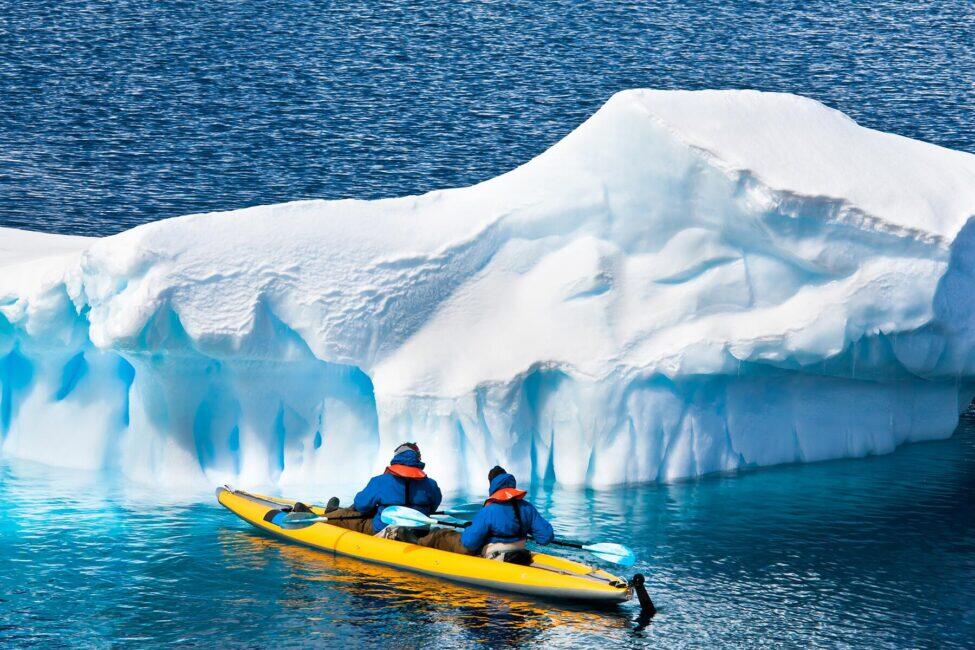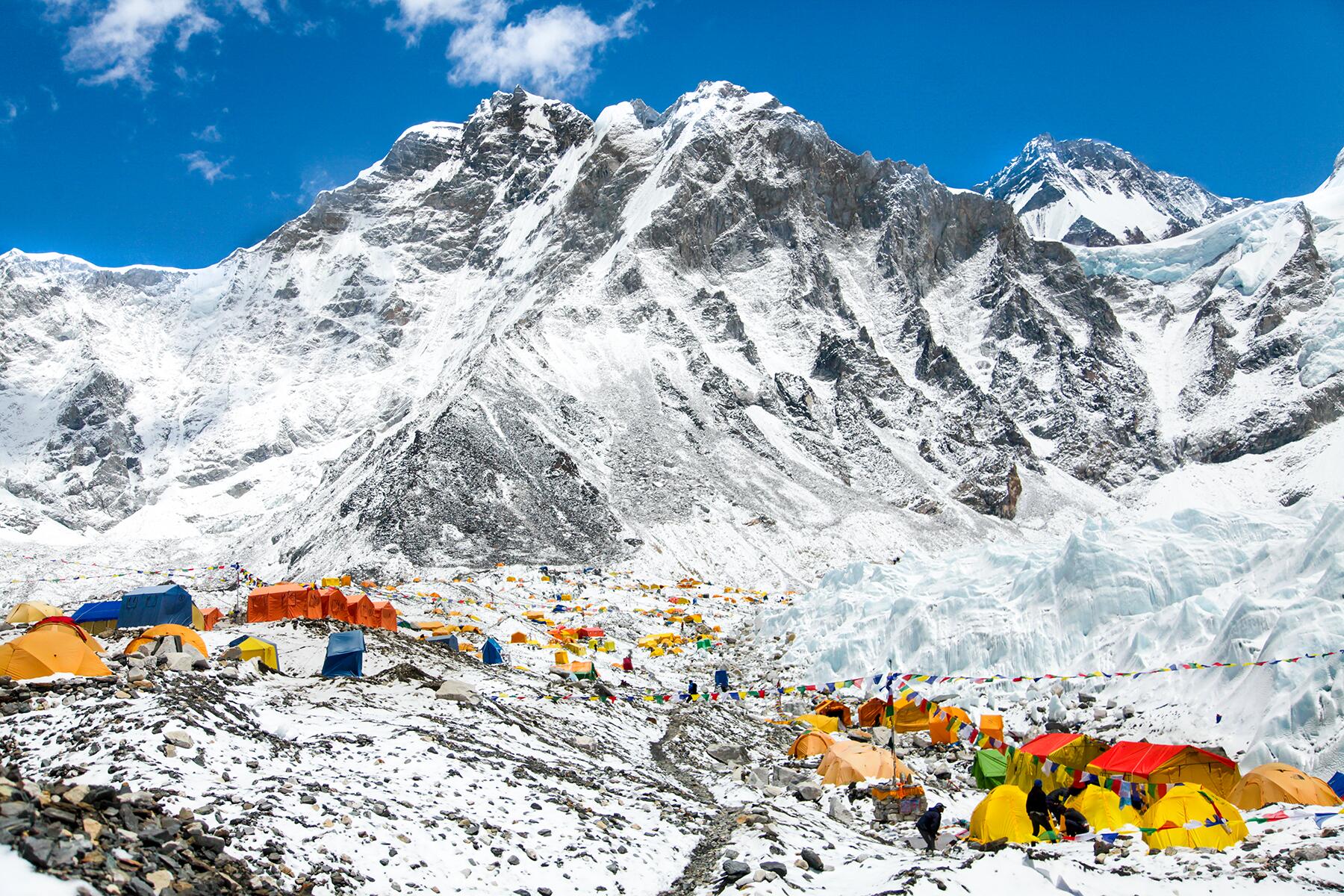How much are you willing to pay for one trip?
Humans have an innate desire to explore. Inventions have stemmed from curiosity and the yearning to see more, do more. Now the technology exists to aid travelers in their most ambitious plans: diving from the highest points of Earth to reaching the depth of the oceans to launching out of the atmosphere in a metal machine. While scientists and voyagers are the pioneers of the uncharted, their journeys have become more accessible to the common folks. Well, relatively.
Extreme travel experiences, as you’ll read below, cost a pretty penny. However, they are now a possibility for a very small section of travelers for whom the novelty of these experiences is priceless.
Mount Everest
One of the most challenging trips you can ever take is a trek up 8,500 meters, to the highest point on Earth. The climb is dangerous, to put it mildly. Your body is actively dying due to the thin air at the summit, and the recent traffic jams on the mountain are adding to the risks—you only have so much oxygen. 2023 has been one of the deadliest seasons on Everest with 17 people losing their lives (more than 300 have died while attempting the climb).
Experts have expressed concerns about overcrowding, and photos of logjams and piles of garbage have gone viral in recent years. If you have watched the movie Everest, you know the chances of a rescue at such an altitude are very, very low, and the dead are left to rest on the summit because bringing them down is also high-risk and expensive.
Recommended Fodor’s Video
Despite the known risks, hundreds of people make a beeline every year to scale this mountain (463 permits were issued till April 2023)—more than 6,000 people have climbed it since 1953.
To climb the Earth’s highest mountain, you need a big heart and a bigger pocket. Nepal issues a permit for $11,000, but that’s just the tip of the iceberg. Tourists spend an average of $50,000 on permits, gear, guides, transport, food, and oxygen tanks. This cost can go up when you add more comfort.
Take for example the Everest Signature Expedition by Austria-based Furtenbach Adventures. A 21-day expedition costs more than $200,000. The premium experience starts with preparation support, private luxury camp at Base Camp, two Sherpas, and a mountain guide.
There’s an alternative too: a $25,000 skydiving trip that’s not for the faint-hearted. This extreme travel experience takes divers up in a helicopter after days of trekking and you freefall in front of Everest (more than 8,000 metres) with supplemental oxygen to land on one of the highest drop zones, Skydive High says.
Cost: $25,000 per person to $200,000 per person
Related: He Climbed Everest in Search of a Lost Camera. If Found, He’d Rewrite History
The Great Himalayan Trail

A 150-day itinerary by World Expeditions takes avid trekkers across the entire length of Nepal from east to west. Trekkers cover more than 1,000 miles on foot, visiting the most remote mountain villages in inhospitable conditions and extreme climates. Start in the east in the Kanchenjunga region, cross the Everest region, and arrive at the Tibetan border after a long, hard, rugged encounter with all of the country’s 8,000 metre peaks. But there’s help: the company arranges all meals and climbers travel with an entourage of crew. Still, only the fittest and experienced should take a bet on completing one of the longest treks in the world.
There are smaller legs on the Great Himalayan Trail, in Nepal, India, and Bhutan. The proposed route stretches 2,800 miles through Pakistan, India, Nepal, and Tibet, but it is just a concept right now.
Cost: $30,000 per person
Antarctica

It’s rough to travel to the world’s largest desert. The journey itself demands a lot from adventurers due to its unpredictable sea passages and inclement weather, and then there are the conditions at the destination—too dry, too cold, and too windy for humans. Yet Antarctica has become a popular destination in recent years, and more than 100,000 people are expected to visit this year.
From sightseeing flights over the continent to luxury cruise ships, tourism in this part of the world is booming. Although you can book your spot on a cruise for $10,000 (excluding flights), the ultra-rich shell out much more for the privilege to dig deeper. You can follow actress Nina Dobrev and F1 driver Lewis Hamilton’s footsteps and charter a $226 million luxury yacht for a $3.5 million trip per person to Antarctica. There are of course those big cruise ships that circle the continent but don’t allow passengers to set foot—that cuts the price to a fraction.
A costly middle ground is $100,000. Jacada Travel has designed a 9-day itinerary that sets off in Cape Town, South Africa, and takes intrepid travelers to Antarctica via a flight. Stay in camps, ice trekking, another flight to see the Emperor Penguins, ice caves and tunnel exploration, abseiling, and hikes are some of the highlights. Another company White Desert promises a similarly luxurious adventure for $98,500.
Cost: $6,000 to $100,000 per person
Related: Antarctica Has Become a Popular Destination. But Should You Actually Go?
Deep Sea Expeditions

You know what scientists know even less than space? The deepest ends of Earth’s oceans. Only 20% of the seafloor has been mapped because the oceans are treacherous. It is another world down below, freezing cold, pitch dark, and high pressure. But humans continue to strive to discover more about the conditions and the creatures—for reasons both scientific and personal.
Last year, a Vietnam-based company Vinpearl launched a submersible experience in a 24-seat submarine that can go up to 100 meters under water. For $60 per person, a 30-minute dive takes passengers to see shipwrecks and marine life in this transparent vessel designed by Florida-based Triton Submarines.
It is the same company that made news in 2019 when their deep-sea submarine The Limiting Factor was used by American adventurer Victor Vescovo to reach the deepest point of Challenger Deep in the Pacific Ocean’s Mariana Trench (almost 11,000 metres in the ocean). In 2012, filmmaker James Cameron accomplished the same feat in the Deepsea Challenger submersible—he was the first person to reach the deepest point on Earth alone. Oceanographers Don Walsh and Jacques Piccard made the first dive in 1960 together. Vescovo holds multiple records as the man who has reached deepest points of five oceans and has been to the highest and lowest points on Earth.
Millionaires can buy their private submersibles for $3.5 million to $7 million for a chance to dive into the deep sea, or turn to companies that offer expeditions into the dark abyss.
In 2020, EYOS Expeditions invited people to join a dive to Challenger Deep for $750,000. The company, according to its website, has done hundreds of dives to explore the Titanic ship wreck, 3,800 metres in the Atlantic.
The Titanic shipwreck has fascinated voyagers for decades. James Cameron, who adapted the story into the eponymous blockbuster Hollywood film, made 33 dives to the site. OceanGate Expeditions offered the same dive for $250,000 per person on its 23,000-pound Titan submersible, which tragically imploded this month, killing five, including the company’s CEO.
Cost: $250,000 to $750,000
Space Travel

Earth is not enough—travelers are also rocketing off to space. Your childhood dream of becoming an astronaut is possible even without NASA’s grueling training—all you need is a quarter of a million dollars.
The world’s richest man and Amazon founder Jeff Bezos took a recreational trip to space on his rocket New Shephard in 2021. His brother Mark Bezos, aviator Wally Funk (oldest woman in space), and 18-year-old Oliver Daemen (youngest person in space) accompanied him on this 11-minute suborbital flight that went up 62 miles before it parachuted. Bezos’ space travel company Blue Origin is inviting people to experience a few minutes of weightlessness for $300,000 allegedly. The first seat on the New Shephard was sold for $28 million in an auction, though the anonymous bidder later dropped out and Daemen got to orbit the Earth. William Shatner, the famous Captain Kirk, has also taken a trip to the edge of the Earth.
This Star Trek-esque adventure is also being offered by another billionaire. Virgin Group’s Sir Richard Branson founded Virgin Galactic, a commercial spaceline company, in 2004. His mission was to start space travel operations in a few years, but it has been close to two decades without a paying passenger jetting on his spaceship—delays have plagued the company repeatedly. The billionaire went on his first space trip in 2021, two weeks before Bezos, but commercial trips are yet to start. June 27-30, 2023 has been announced as the first window for paying customers who have given a check for as much as $450,000.
Elon Musk is planning trips around the moon and a very ambitious plan to charter a 100 people to Mars on SpaceX’s Starship. The spacecraft company has been making journeys to the International Space Station (ISS) with cargo since 2012 and humans since 2020.
Russia has been hosting tourists at the International Space Station since 2001. American entrepreneur Dennis Tito was the first paying astronaut; he was billed $20 million by Russia for a weeklong trip to the ISS on a Soyuz aircraft. Last year, he booked another space adventure, this time to the moon with SpaceX.
NASA is similarly selling tickets to the most expensive destination ever. For $55 million each, three businessmen chartered a SpaceX rocket last year to spend 10 days in space. In May, another group of private citizens set off to the ISS for over a week.
A space hotel is actually not outside the realm of possibility. One is scheduled to open in 2025!
Any space trip, whether you’re suborbiting for minutes or spending a few days conducting tests like an astronaut, comes with risks—no kidding, you’re sitting in a rocket. Without much regulation, ticket-buyers are “flight participants” becoming part of an experiment, Ram Jakhu, director of Air and Space Law at McGill, told Business Insider.
Cost: $300,000 to $55 million per person.




Great time to post deep sea exploration as an extreme travel option, Fodor's! Read the room! 😂